Published 14 July 2019 ● Last Updated on 17 July 2020
Be FREE this July…from PLASTIC!
It is estimated that we produce 300 million tonnes of plastic waste every year, and most of it is single use plastic. Our oceans, rivers, landfills and even homes are all overflowing with plastic and the sooner we take some actions to reduce its usage in our daily lives, the planet will be a better place for us to live in.
Plastic Free July is a global movement that encourages individuals to be the solution to the plastic problem by refusing single use plastic products. If you haven’t already signed up for the challenge, there will not be a better time to start. Just click here and be a part of the change you want to see!
As we aim to reduce our use of plastic, it means we need to look for eco friendly alternatives to it. There are (and has always been) many alternatives to plastic – glass, steel or other metal, paper, cloth and the latest wonder material, bamboo!
Bamboo: A ‘new’ wonder material?
Easy to grow, easy to make into a variety of products and easy to dispose off – what’s there not to like about bamboo? Over the last couple of years, bamboo products have flooded the markets and consumers are happy to make the shift to bamboo products as they are durable and biodegradable, a win – win situation.
But, bamboo really isn’t a ‘new’ wonder material. If you look at ancient Chinese history, it is noted that during the Shang Dynasty (6th – 11th century BC) people were already using bamboo in their daily lives – food, clothing, housing, transportation, musical instruments and even weapons. Even before paper was invented, strips of bamboo were used to write on. And if you thought (like I did) that bamboo was used only for essentials, here’s a bit of trivia. In 1947, most industries including fashion were affected by WWII. As raw materials were limited and difficult to find, Gucci craftsmen used bamboo to create the curved top handle of the bags – a style trend that has remained to this day and is popularly known as the Gucci Bamboo Bag!
Growing bamboo: A renewable and sustainable option
Let’s start at the very beginning, a very good place to start…Is the bamboo plant good for the environment? Is growing bamboo a sustainable option? YES, YES and add a few more yeses…
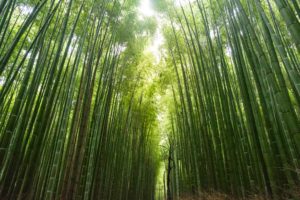
The bamboo plant is extremely easy to grow and is good for the surrounding environment. Here are some of the top reasons,
Renewable resource| After being harvested, bamboo can re-grow to an adult plant within 3 to 5 years; it grows nearly 2 feet in 1 day! There is no need to re plant or cultivate the land as bamboo keeps growing new shoots annually from the already established root system.
Easy to grow| The bamboo plant is naturally pest resistant – it needs no pesticides to protect it. Similarly, no agricultural fertilizers or chemicals need to be added for it to grow. Unlike cotton that needs a lot of care and tonnes of water to grow, bamboo grows easily in different climatic conditions and requires a lot less water !
Soil protection| Most crops need to be completely removed before new cultivation occurs, resulting in top soils being eroded and washed away. As bamboo roots remain in place, they prevent soil erosion and preserve nutrients in the soil for the next crop.
Cleans up the air| The bamboo plant releases 35% more oxygen than other trees and can absorb nearly 12 tonnes of CO2 per hectare per year!
Less wastage| Most parts of the bamboo plant have some use or other and the wastage is minimal.
As one can see, growing bamboo is good for the environment. Additionally, as it is an easy crop to grow, it helps the local community economically as their investments in it are lower.
From plant to product – Is bamboo eco friendly?
The bamboo production process is extremely eco friendly, at least for most of its daily use products and building materials as they do not need to undergo any major chemically induced process. Here are some of the major areas where bamboo and its products are used instead of other less eco friendly materials.
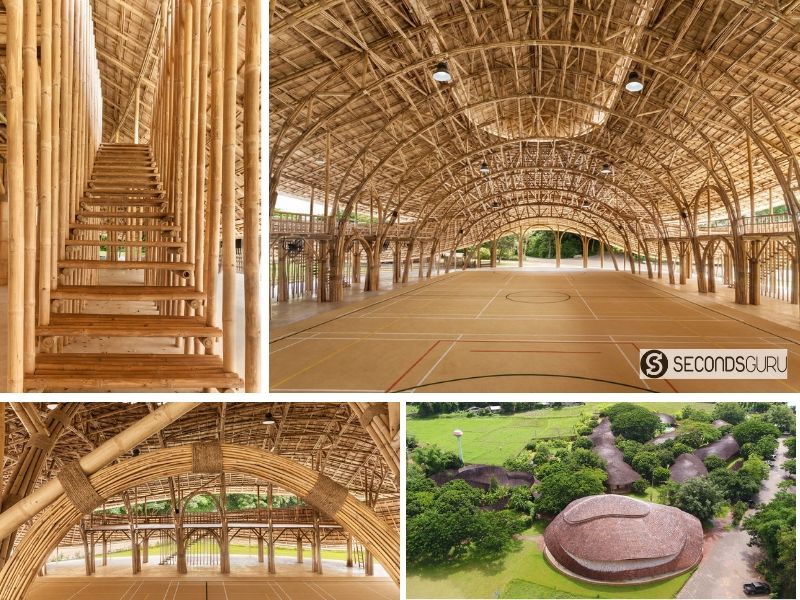
Building Materials| When it comes to building materials, it seems bamboo has the ability to replace most materials – concrete, steel and wood! If bamboo is combined with other materials for constructions, one can build a home that is quake proof, withstand high wind speed, water resistant and fire retardant!
We know that bamboo is hard and durable, but it is also flexible (can be given shapes or bent) and lightweight (easy to transport) making it good for construction purposes. The plus point is that it is readily available and cheap allowing for affordable housing.
Bamboo Flooring| The more conscious consumer is choosing to opt for bamboo flooring instead of the regular hardwood flooring as it is a more eco friendly option. This flooring is easy to maintain – just sweep it clean and mop it once in a while, no need to worry about spills as bamboo is slightly more water resistant than traditional wooden flooring, and definitely stronger than hardwood flooring. A well maintained bamboo flooring can last up to 20 to 25 years and it is cheaper than getting wooden flooring.
Household Items| From window blinds to cutting board and straws to personal usage items like toothbrushes – the bamboo options in this category are the new rage and very much in demand.
Bamboo blinds look great and add a natural look to the space; they can be used indoors or outdoors like in a balcony. They are low maintenance and blend in with any decor.
Bamboo furniture pieces are also readily available in the markets and online. Apart from them being strong, designers are trying out different styles with the material so that it looks great in any setting that it is used in.
The list of bamboo kitchen items seems to be growing – from cutlery and crockery to chopping boards and even reusable water bottles. Bamboo products are heat, stain and odour resistance making them quite suitable for kitchen use.
Bamboo straws are the answer to tackling the plastic straw menace. They are eco friendly, reusable and biodegradable (as they have a limited lifespan).
Bamboo toothbrushes are slowly gaining popularity and that’s a good thing too! Our dentists advise us to change a toothbrush every 3 to 4 months and the global population is 7.7 billion people – can you imagine the number of plastic handle toothbrushes that are being disposed off? At least, the bamboo handle is biodegradable and will disappear from the face of the earth in 5 to 10 years!
If you’re wondering why I haven’t mentioned bamboo fabric yet, read on…
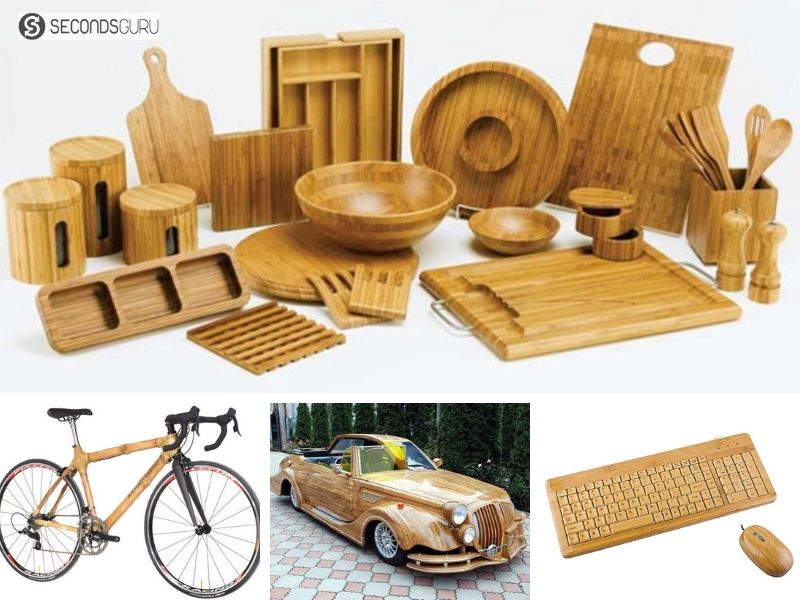
Bamboo Fabric
Is bamboo fabric really eco friendly? Well, yes and no – it depends entirely on the way it has been processed.
One way to process it is crushing the woody parts and breaking it down using natural enzymes to soften it so that the fibre can be combed out and spun into yarn. The fabric made using this yarn is what is known as bamboo linen, a bit rough to use for clothing. While this is the most eco friendly process, it is also labour intensive and extremely costly. As a result, this is not the way the bamboo fabric available in the market is produced.
The fabric that our ‘bamboo clothing’ is made from is usually a chemically manufactured fibre made using the viscose process. This is an intensive chemical process where in the bamboo cellulose is treated with various chemicals to get the end product – bamboo rayon. Whether made from wood pulp, paper or bamboo, rayon is harmful for the environment as well as the garment workers due to the toxic chemicals (carbon disulphide) used in the manufacturing process.
While fabric is a major grey area in bamboo being an eco friendly alternative, there have also been questions raised about how sustainably bamboo is being grown especially in China from where majority of it comes as there is very little information regarding whether forest are being cleared to make land available for bamboo cultivation.
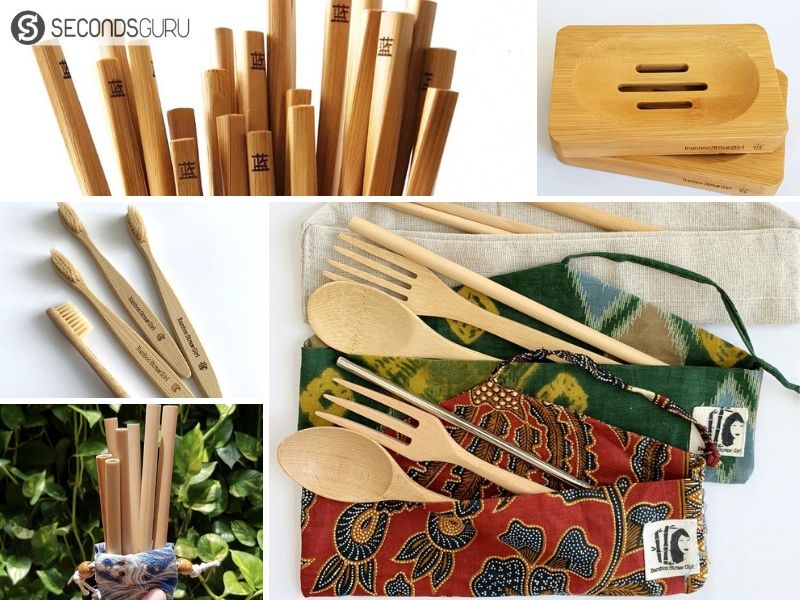
Happy bamboo product shopping!
The next time you need to buy something for the house, check if it has a bamboo alternative. Today, bamboo products are easily available all across the globe and can also be purchased online. Our tried and tested online recommendations would be Bamboo straw girl and Neis Haus. (PS: They have bamboo and lots of other eco friendly products too!)
Don’t get bamboozled by bamboo; buy the products that truly eco friendly!
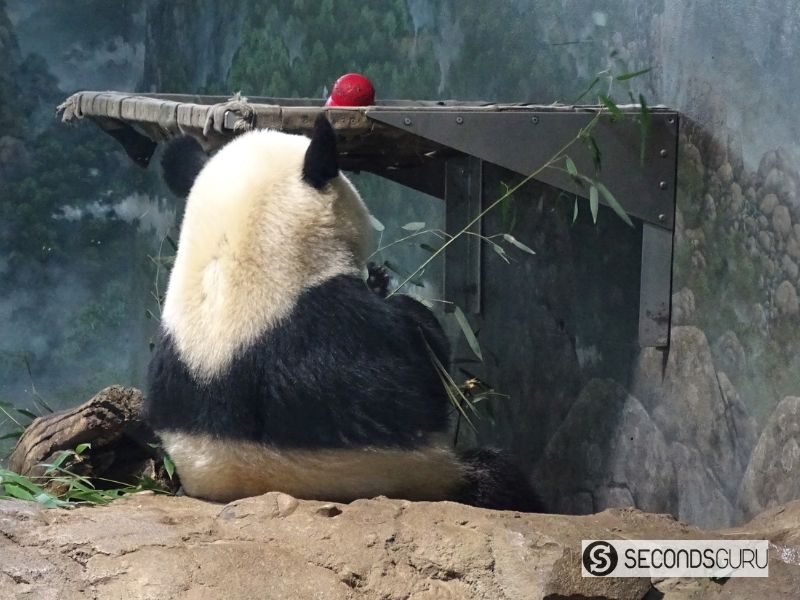
Related Articles:
Featured Image by Preetika Soni


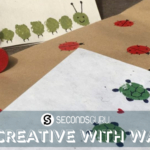
0 Comments